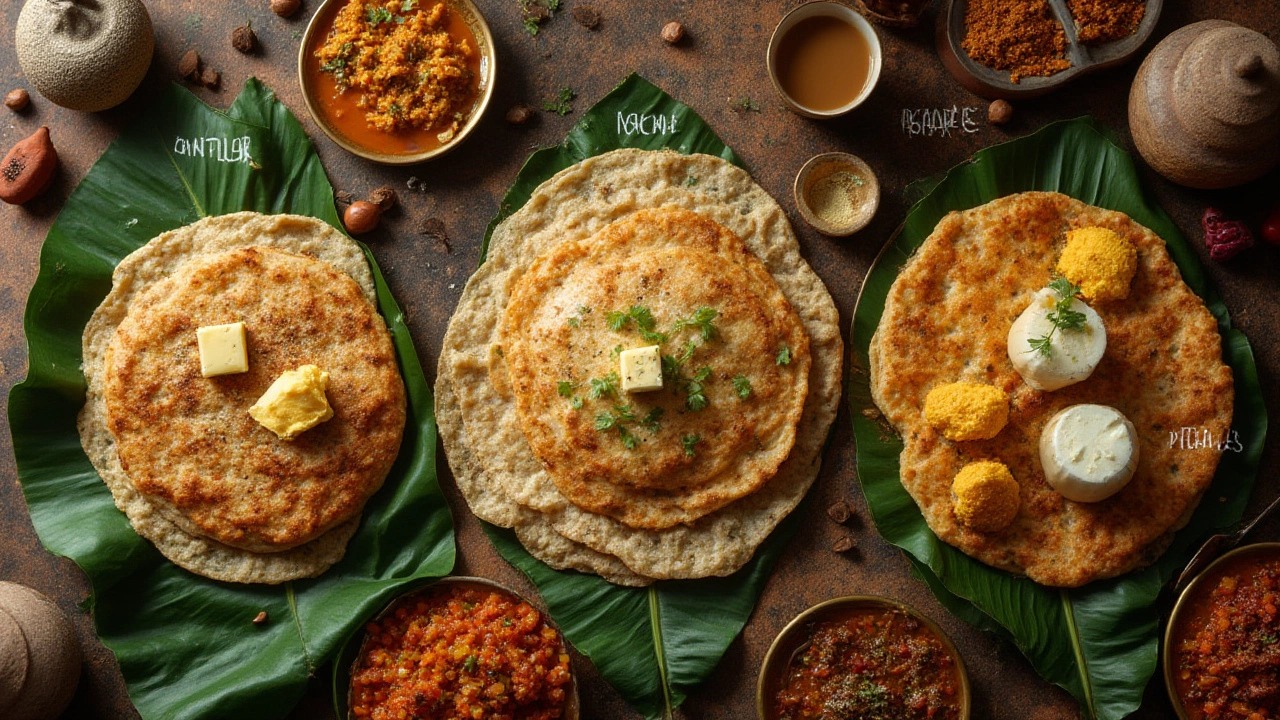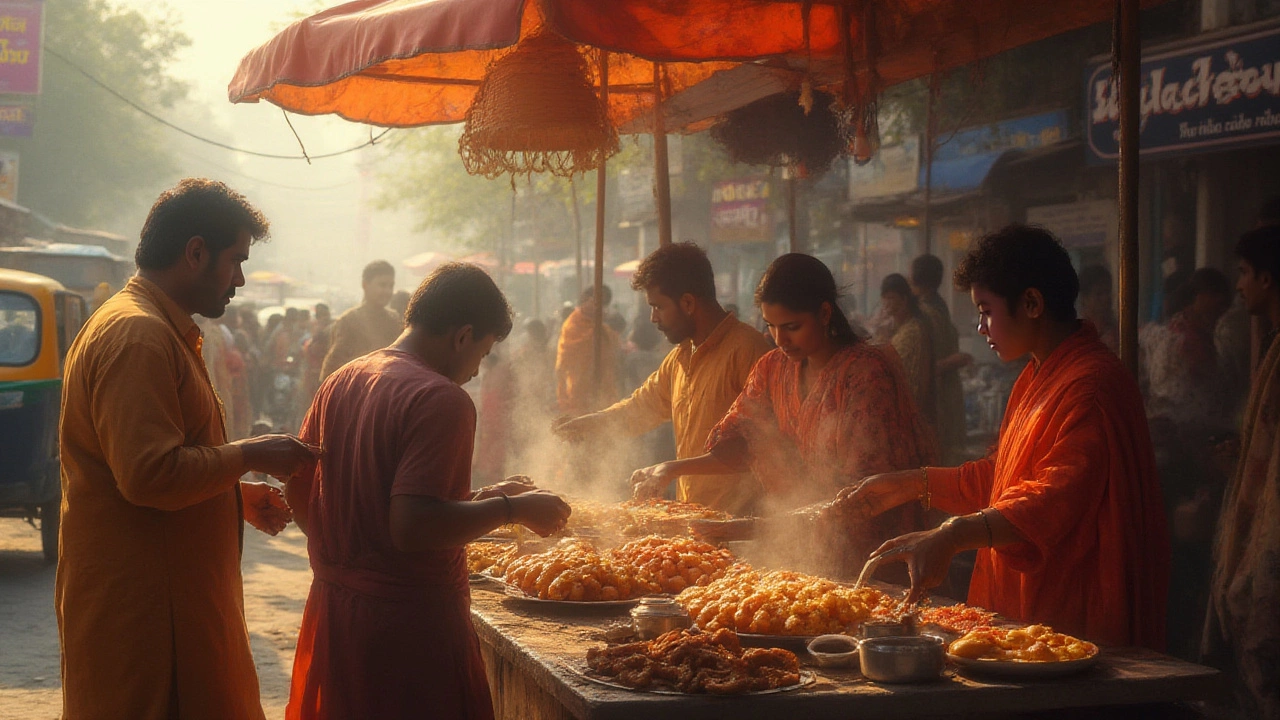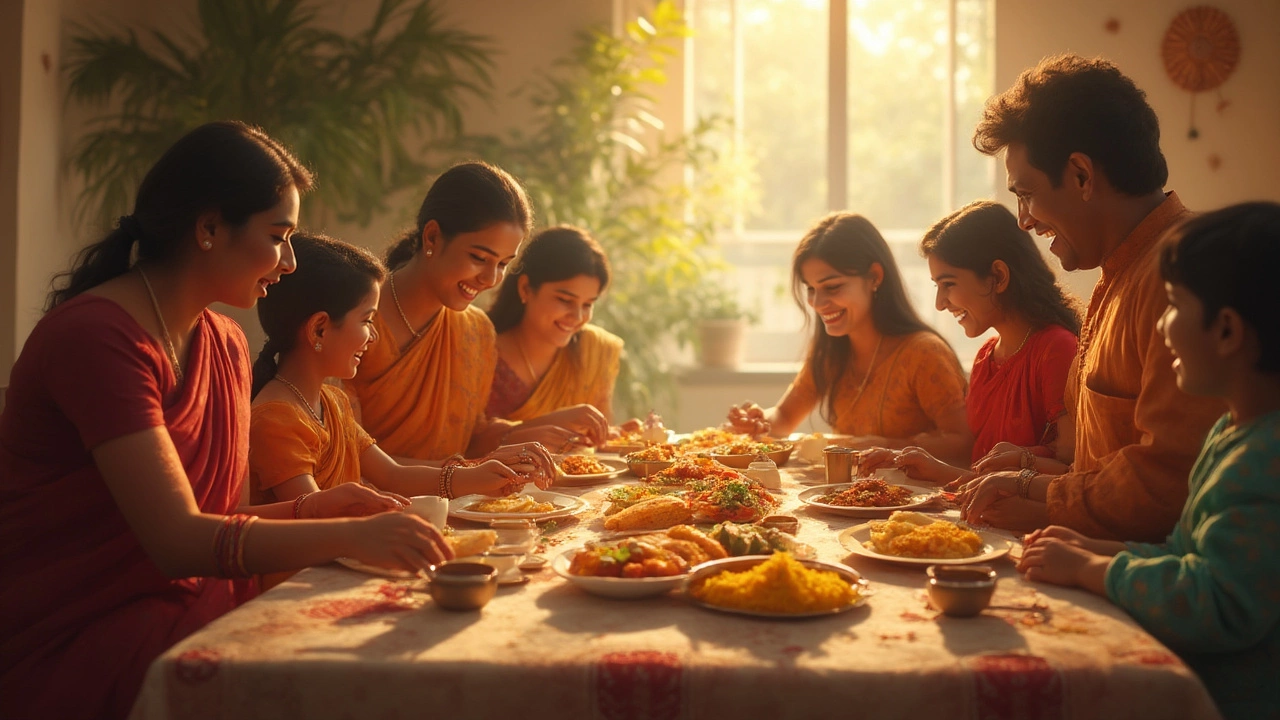What you have for breakfast in India says a lot about where you’re from. Walk down any street at eight in the morning and you’ll smell spices sizzling in pans, dough being patted into breads, the sharp tang of fresh chutneys. Hunger wakes up early in India, and breakfast is never boring. In a country that claims over 800 languages and 29 states, there is no single definition of a “typical” Indian breakfast. Instead, it’s a joyous, mouthwatering mosaic—each piece shaped by history, climate, faith, and family. Some days a plate arrives purely out of tradition; other days, it’s all about convenience. This isn’t just a meal to fill your stomach. It’s a daily ritual, a source of comfort, and—let’s be honest—the best way to convince yourself to get out of bed.
Breakfast Traditions Across Indian Homes
Indian family kitchens come alive in the early hours. Breakfast doesn’t just mean eating—this is often the only meal everyone actually shares before the day scatters them across work, school, and the endless thrum of city or village life. The menu is rarely “one size fits all.” A typical household might cater to different preferences: a steaming glass of masala chai for Grandpa, a quick bowl of poha for Mom, stuffed parathas for hungry kids, and maybe dosas for Dad. Many Indian breakfasts still stick to homemade dishes cooked fresh every morning, despite the rush of daily life. The secret ingredient is always a little love (and, honestly, a lot of ghee or butter too).
Tradition runs deep—especially in joint families. For decades, women would rise before dawn to knead dough, chop vegetables, and grind spices by hand. Even in urban areas where both parents work, home-cooked breakfast remains a priority. Many city dwellers find shortcuts: ready-made batters, pressure cookers, or meal-prep on weekends. But the home-cooked breakfast still spells comfort and continuity—connecting generations through taste and memory. It’s common to hear grandmothers insist on feeding children with their own hands, repeating recipes passed down for centuries.
Breakfast isn’t just early food—it’s also tied to faith. South Indians might forgo garlic and onion on certain days, in line with religious beliefs. In Muslim homes during Ramadan, early-morning sehri features heavier items to sustain fasting. And millions of Hindus skip eggs or meat, sticking to vegetarian dishes. The diversity at the Indian breakfast table is as much about what’s left out as what’s put in. But no matter the region or religion, breakfast is meant to nourish body and soul.
North Indian Breakfast Staples
Travel north, and you’ll spot a spread focused on hearty, filling foods—think “stick to your ribs” kind of dishes, perfect for biting cold winters or fueling long days. The star in many North Indian homes? The humble paratha. This flatbread gets stuffed with mashed potatoes, paneer (cottage cheese), cauliflower, or radish. Pan-fried in ghee until golden, it’s served hot with yogurt, butter, or a dollop of spicy pickle. Sometimes, a little jaggery (unrefined cane sugar) is added for sweetness, eaten alongside sips of milky tea.
Chole bhature is another North Indian favorite—more indulgent, usually saved for weekends or festivals. Picture deep-fried, pillow-like bread (bhature) paired with rich chickpea curry (chole). In Punjab and Delhi, it’s breakfast, brunch, and a mini-celebration on a plate. Then there’s poha—flattened rice cooked with turmeric, green chilies, peanuts, and garnished with fresh coriander. Though more associated with Central India, you’ll find poha enjoyed in many northern homes too. It’s quick and light, perfect for busy mornings.
And who could forget the steaming bowl of aloo puri? Soft wheat bread is puffed up in hot oil and served with spicy potato curry. It’s the kind of breakfast that inspires nostalgia and delicious, happy food comas. Many kids rush out with a glass of lassi (yogurt drink), banana, or even simple toast with homemade butter. Sweet lovers gravitate to halwa or vermicelli porridge (seviyan). And while coffee is catching up, a glass of “chai”—spiced, milky tea—remains the beloved wake-up call in most households.
The beauty of North Indian breakfasts is in the layering of flavors—tangy pickles, sweet yogurt, savory curries. No wonder breakfast here often feels like a mini-feast. The emphasis on wheat, potatoes, and dairy reflects the agricultural landscape, with Punjab and Uttar Pradesh among the country’s largest producers of wheat and milk. There’s practicality, but also pure pleasure, in these homegrown ingredients.

South Indian Breakfast Classics
Head down south, and it’s a whole new morning story. Here, rice takes center stage in almost every breakfast dish. Light, fermented, gently tangy dosas are everywhere—a thin, crispy crepe made from rice and lentil batter, always cooked fresh and best eaten straight off the tawa (griddle). Some like theirs stuffed with spiced potatoes (masala dosa), while others prefer them plain, with chutneys and sambar (a tangy lentil stew) on the side.
Idlis—the pillowy-soft, steamed rice cakes—are the poster children of South Indian breakfast. Recommended by doctors, idlis are easy to digest and gluten-free, making them a favorite even outside India. Each idli might look innocent, but every bite tells of hours spent soaking, grinding, and fermenting the batter. There’s ingenuity in the accompaniments: coconut chutney, tomato chutney, and sambar show up at nearly every table. You’ll spot vadas too—savory, spiced doughnuts made with lentils—crunchy on the outside, fluffy within.
Not a fan of idli and dosa? Try upma. It’s a fluffy, savory semolina (rava) porridge, jacked up with mustard seeds, curry leaves, veggies, and cashews. Another local favorite: appams, lacey rice pancakes enjoyed with coconut milk-based curries. In Kerala and Tamil Nadu, puttu—a steamed log of rice flour and coconut—is often eaten with kadala curry (black chickpeas). Each dish tells the story of the local produce, especially coconut, bananas, and rice.
What’s striking about a South Indian breakfast is its focus on steamed, fermented, or lightly sautéed ingredients—perfect for humid climates and easy digestion. You’re just as likely to find filter coffee here as a companion; famed “degree coffee” is brewed in long metal filters, served sweet and strong. On busy days, many folks grab a quick bowl of pongal—a creamy rice-and-lentil porridge topped with ghee and crunchy fried lentils. It’s a hug in a bowl, simple and infinitely comforting.
Western and Eastern Indian Breakfast Dishes
Venture to Maharashtra, Gujarat, Bengal, or Odisha, and you’ll discover whole new breakfast identities. In western India, poha (again!) gets a loyal following. Unlike its North Indian cousin, Maharashtrian poha often features peanuts, fresh grated coconut, and green chilies. Far from boring, it’s sprinkled with sev—tiny crunchy noodles made from chickpea flour—just before serving.
Pav bhaji is another Mumbai invention: soft, fluffy bread rolls (pav) toasted in butter, served with a spiced, mashed vegetable stew. Street vendors start dishing this up from sunrise, and for many busy workers, it’s comfort food that ticks every box. In Gujarat, the land of “snacking anytime,” breakfast often means thepla—spiced flatbreads with fenugreek—eaten with pickle or yogurt. Dhokla, a steaming, spongy chickpea flour cake, is another signature morning treat that’s light, tangy, and impossible to resist.
Bengal brings its own flair: think luchi (deep-fried wheat puris) with aloor torkari (spiced potato curry), or a plate of cholar dal. In the Northeast, you might get sticky rice cakes, fermented bamboo shoot chutney, or smoked fish—all reflecting tribal food traditions and the abundance of local ingredients. Odisha famously offers pakhala bhata—a cool, fermented rice soup, with accompaniments like sautéed vegetables, especially in the summer.
With each bite, you taste not just flavor but also necessity: western India leans on grains and oilseeds due to a drier climate; the east celebrates rice, freshwater fish, and root vegetables from lush landscapes. Each region carves out its own breakfast rules—sometimes sweet, sometimes spicy, but always made to please. If you’re visiting, there’s no greater joy than sampling the local breakfast at a friend’s house or a street corner canteen. Don’t skip the chai or the regional coffees—each has its own addictive twist.

Fast Food, Street Food, and Modern Breakfast Trends
Indian cities move fast, and breakfast has to keep up. While family breakfasts are sacred, millions of people now grab their morning meal on the go. Step outside a train station in Hyderabad, and you’ll be handed a piping hot plate of idli or vada, wrapped in banana leaf. Pause at a street stall in Mumbai, and pav bhaji or akuri (spiced scrambled eggs on bread) will tempt you with its wafting aroma. The genius of Indian street food is how much flavor, nutrition, and satisfaction gets squeezed into just a few minutes, often for less than the cost of a cup of coffee elsewhere.
Quick-service restaurants are now busy at breakfast time, serving regional favorites (masala dosa, poha, or aloo paratha) alongside international classics like croissants and bagels. In offices, canteens serve up dosa batter straight from machines, and food-delivery apps beam the morning’s special straight to your door. Many Indians—especially Gen Z and Millennials—now reach for smoothies, muesli, overnight oats, or Greek yogurt bowls. This global touch isn’t new; after all, “cornflakes with hot milk” has been an Indian breakfast since the 1970s, thanks to Bollywood stars and ad jingles.
But the healthiest modern Indian breakfasts often blend old and new. A bowl of sprouted moong salad might sit next to avocado toast. Masala omelets now feature with sourdough bread. Gluten-free? There’s always dosa or idli. Vegan? Go for aloo poha, coconut chutney, or dal cheela. Food scientists have even confirmed that fermented breakfasts like idlis help boost gut health and aid digestion. A 2023 survey of Indian urban households (Food Navigator Asia) found that while nearly half preferred traditional breakfasts on weekends, quick and healthy options ruled weekday mornings.
| Region | Popular Breakfast Dishes | Main Ingredients | Typical Beverage |
|---|---|---|---|
| North India | Paratha, Aloo Puri, Chole Bhature | Wheat, potato, chickpeas, dairy | Masala chai, lassi |
| South India | Idli, Dosa, Upma | Rice, lentils, coconut | Filter coffee |
| West India | Poha, Thepla, Dhokla, Pav Bhaji | Rice, wheat, chickpea flour | Masala chai, buttermilk |
| East India | Luchi, Pakhala Bhata, Cholar dal | Rice, lentils, wheat | Tea |
If you’re visiting India or just want to spice up your mornings, start simple. Try typical Indian breakfast staples: alternate between a hot aloo paratha one day, a stack of dosas the next, then get playful with poha or dhokla. Look for locally milled flours and spices for a burst of true flavor. Pay attention to the sidekicks—chutneys, yogurt, pickle—because in India, breakfast is a full-sensory affair. No matter where you find yourself, you’ll never eat alone with a plateful of Indian morning classics.
